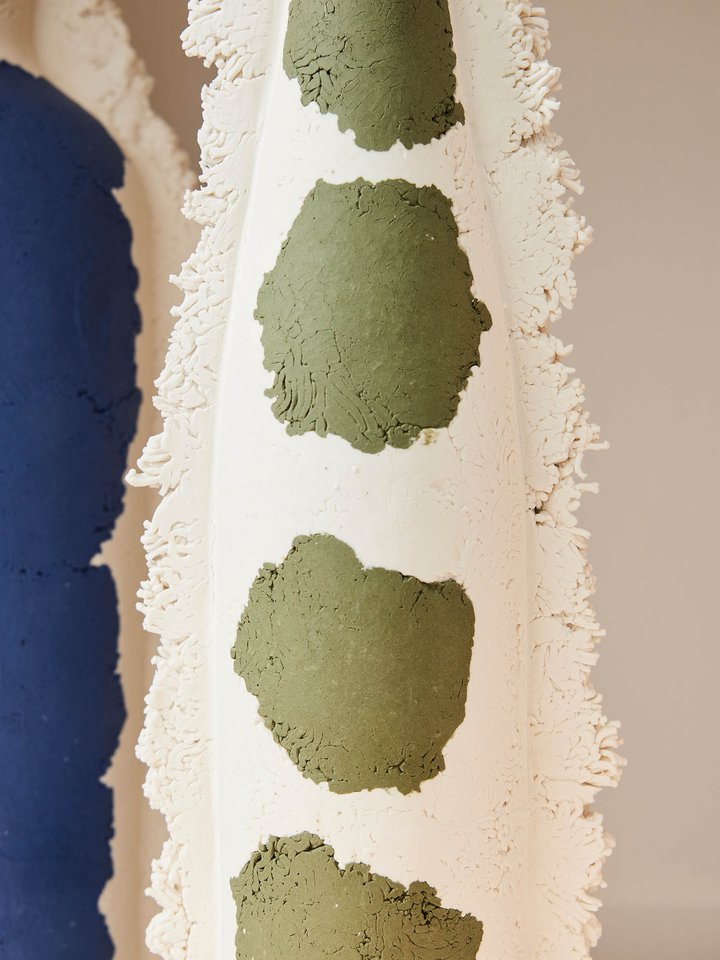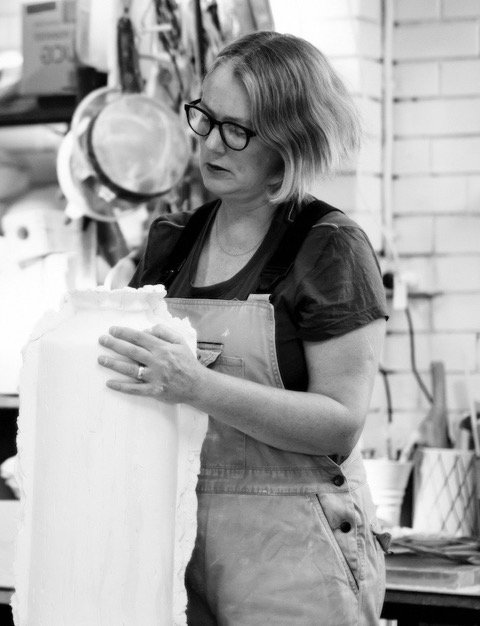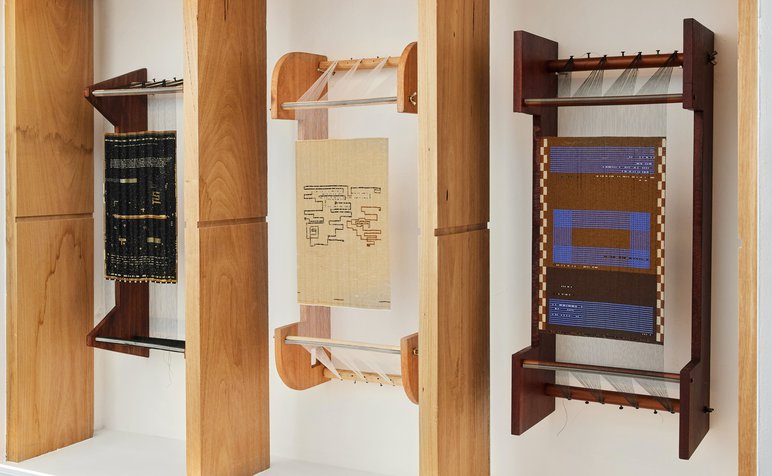
Kristin Burgham is a ceramicist working with industrial ceramic production processes. In her Vitrine Gallery exhibition, Legacy, Burgham explores discarded and found objects through ceramic moulding processes, transforming the form of the object into a tool for exploring colour, form and memory. We chatted to Burgham to gain a little more insight into her practice and works.
What draws you to industrial craft processes and how is this interest reflected in your practice?
I studied shoe making when I was 20. This exposed me to skilled makers working in factories, workshops and converted garages. At the time factories were closing down and skills were disappearing. I had previously considered “ industry ‘ to be noisy machines but after this experience I thought a lot about how objects were made and the people involved in the making. Years later I visited Jingdezhen in China and saw talented but unknown ceramic makers enabling global ceramics practices to survive through their skills. I feel conflicted by the anonymity of skilled people. Through my practice I try to reveal the thrill I get when I find evidence of a maker. My work is a memory of making.
Legacy is an assemblage of forms flowing through the internal spaces of the vitrine. How do you approach the difference between encountering your works as individual pieces versus as a part of an assemblage?
I always used to think of my pieces as a landscape (assemblage) but more recently I have come to appreciate that people like to interact and create their own landscapes with my works. It brings out a playful, experimental side of people. I am happy my work speaks to people and their desire to create a landscape.I still work on limited assemblages such as MOMENT ( 2022) a finalist in the Vic Craft awards and now housed at the Museum of Art in Ballarat. It was a landscape firmly based in the ‘pandemic era ’. The medical bottle, the fleshy tones speaks of medical procedures to me, however I noticed there is no reference to this at the gallery - perhaps they have decided their own landscape. That’s fine with me.


The use of discarded/found objects in your practice relates to notions of time, memory, and the anonymous maker. Can you speak to these themes within your work?
I am interested in the emotional value of objects and the way they move in and out of our lives. Discarded things are the most interesting to me. I make plaster moulds of selected objects to use in my practice. The moulds act like a like a death mask capturing details of an objects maker and its life at that particular time - like a photograph. Clay is also a great memory holder. It retains information and adds another another layer to my practice. The anonymous maker is something I am always looking for in the objects I work with. This in itself is a marker of time.
What draws you to working with clay and ceramic processes?
I had dabbled with clay for a number of years before I took a mould making course at Tafe in Sydney with Julie Bartholomew. This course spoke to me and showed me how I could use an industrial process to further develop my interest in clay. It was quite a game changer for me. I find the moulding process a chance to really consider am object up close. I realized I needed to commit to clay. I quit my career and studied ceramics full time. I love the experimental process of working with clay. It allows me to continually explore.
Legacy is on show in the Vitrine Gallery January 31, 2023 — March 4, 2023.
Interview by Anni Hagberg.
Exhibition photography by Henry Trumble, photo of artist courtesy Kristin Burgham.

